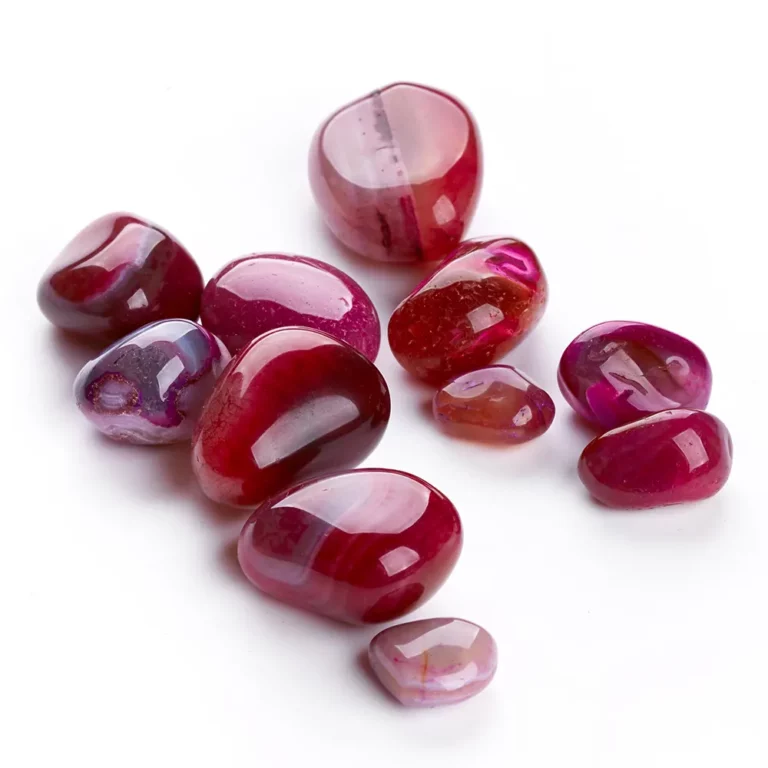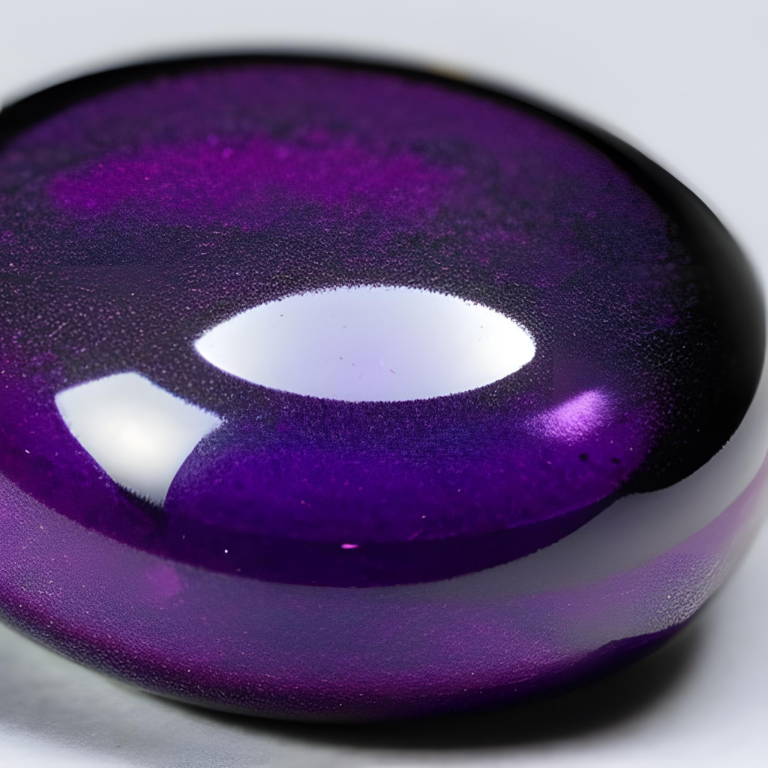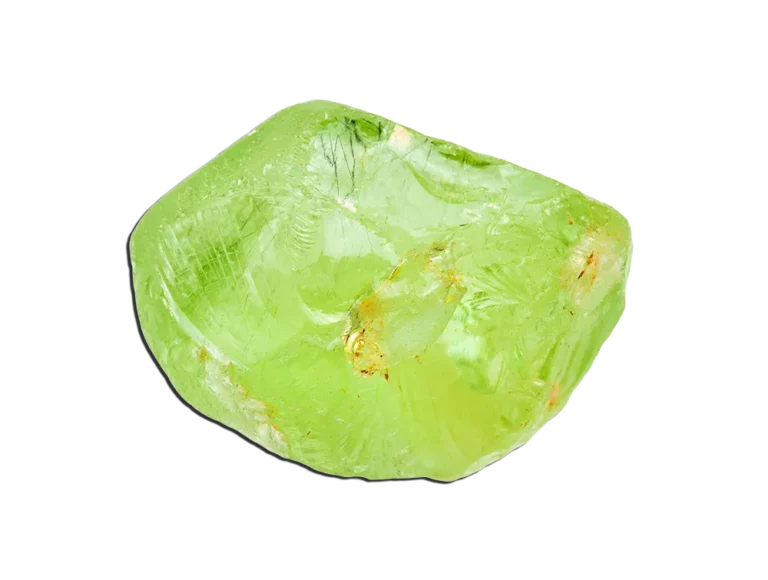Crocoite Gemstone: Properties, Benefits & Meanings
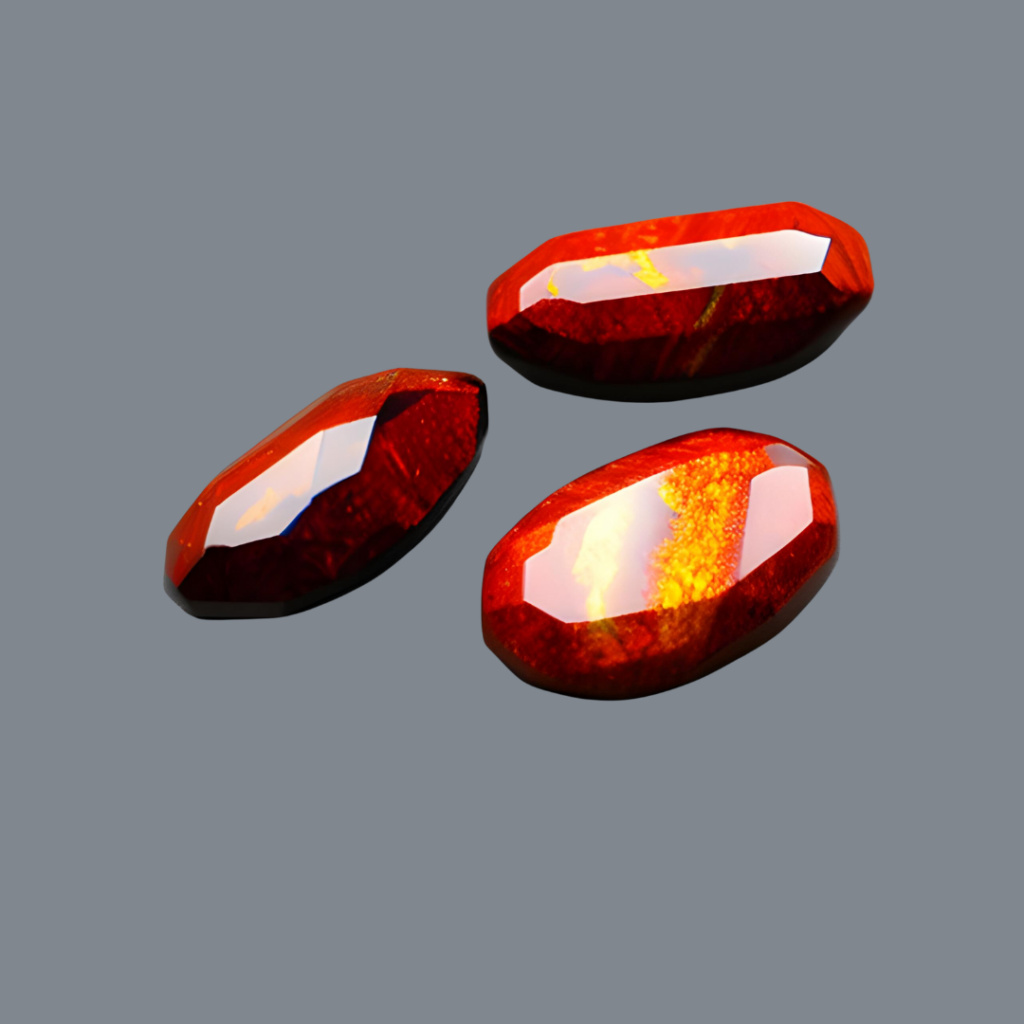
Crocoite Gemstone Overview
Crocoite is a rare and highly sought-after gemstone in Tasmania, Australia. It is known for its striking orange-red color and unique crystal formation, often described as needle-like or hair-like. Crocoite is a mineral that contains lead chromate. It forms in the oxidized zone of lead ore deposits. Jewelry makers frequently use it because of its rarity and beauty. Collectors highly value it for the same reasons.
Due to its high lead content, Crocoite is not considered a suitable gemstone for everyday wear. Rather, it is best appreciated as a valuable addition to a gemstone collection or for use in decorative pieces. Despite its popularity, Crocoite remains a relatively unknown gemstone outside of the gemstone enthusiast community.
In this blog post, we’ll cover all the important information about Crocoite. This includes its properties, benefits, and meanings. By the end of this article, you’ll have a complete understanding of this fascinating mineral.
What is Crocoite Gemstone?
Crocoite is a rare gemstone found in limited locations worldwide, including Australia, Russia, and Tasmania. It is a bright orange-red mineral of lead chromate and is often used as a pigment in paints and dyes. Collectors and gemstone enthusiasts highly prize Crocoite for its unique color and crystal formations, which can be elongated and needle-like or more blocky and prismatic.
This gemstone is not often used in jewelry because it is soft and not very durable. However, it is still highly desired for its beauty and rarity.
Regarding its physical characteristics, Crocoite often forms long, slender colorful crystals, adding to its allure. These crystals can sometimes be transparent and opaque, showcasing a glossy and lustrous appearance. Beyond its aesthetic appeal, Crocoite holds metaphysical properties that are believed to benefit those who wear or work with it.
How is Crocoite Gemstone Formed?
Crocoite gemstone is formed through a fascinating geological process involving the interaction of minerals and environmental conditions. It typically occurs in lead-rich environments and is primarily found in the Adelaide Mine in Tasmania, Australia.
The formation of Crocoite begins with the presence of lead and chromium-rich solutions in the Earth’s crust. As the solutions cool and undergo chemical reactions, the lead and chromium combine to form lead chromate, the main mineral component of Crocoite. The lead chromate mineral then crystallizes within the rock cavities, gradually growing into elongated prismatic crystals.
It’s worth noting that the Adelaide Mine in Tasmania, where Crocoite is predominantly found, has unique geological conditions that have contributed to the formation of these exceptional gemstones.
Physical Properties
| Mineral Group | Lead Chromate |
| Formula | PbCrO₄ |
| Chemical Name: | Lead(II) chromate |
| Color | Vivid red, ranging from fiery orange-red to deep crimson |
| Hardness (Mohs scale) | 2.5 – 3 |
| Refractive Index | 2.31 – 2.45 |
| Fracture | Uneven to conchoidal |
| Luster | Adamantine to vitreous |
| Specific Gravity | 5.9 – 6.1 |
| Transparency | Transparent to opaque |
Etymology
“Crocoite” is derived from the Greek word “krokos,” which means saffron. This name was given to the gemstone due to its vibrant red color, which resembles the rich hues of saffron, a highly valued spice. The choice of this name highlights the gemstone’s striking and distinctive appearance.

Crocoite Gemstone Location on World Map
Where is Crocoite Gemstone Found?
Crocoite gemstone is primarily found in the Adelaide Mine in Dundas, Tasmania, Australia. The Adelaide Mine is renowned as the primary source of Crocoite specimens. It has produced some of this gemstone’s most exceptional and sought-after specimens. Other countries where it is found are:
- Australia
- Brazil
- Canada
- China
- France
- Germany
- Italy
- Maxico
- Namibia
- Tajikistan
- Philippines
- Russia
- South Africa
- United States
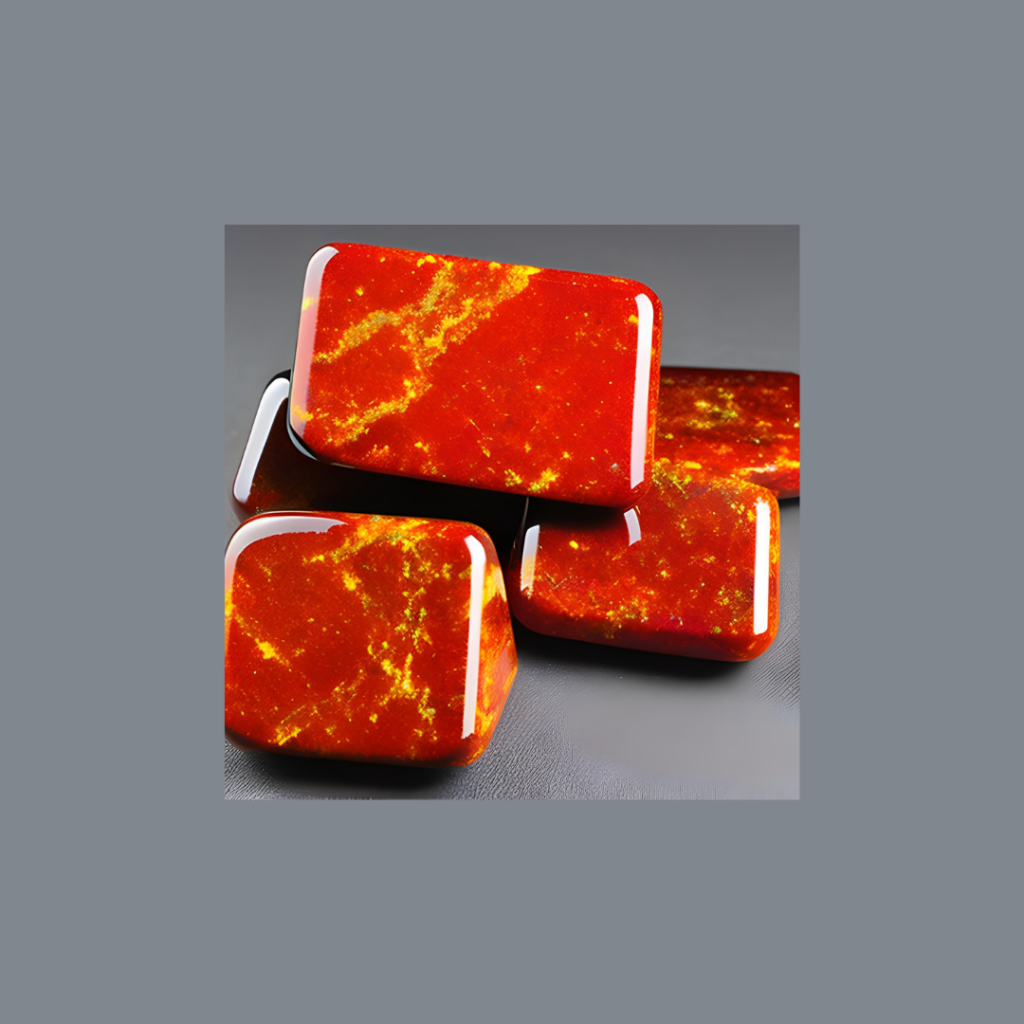
Crocoite Gemstone Appearance
Crocoite gemstone exhibits a captivating and distinctive appearance that differentiates it from other gemstones. The most notable feature of Crocoite is its vivid red color. It can range from fiery orange-red to deep crimson. Crocoite often forms long, slender prismatic crystals. These crystals can be quite elongated and exhibit striations along their length. Crocoite can vary in transparency. Some specimens are transparent, allowing light to pass through them and enhancing their brilliance. However, many Crocoite crystals are opaque.
Crocoite exhibits an adamantine to vitreous luster, which means it has a brilliant and glass-like shine. As a result, the surface of Crocoite can be smooth and reflective, with a glossy appearance.
Crocoite crystals can vary in size, ranging from small fragments to several centimeters in length.
Types of Crocoite Gemstone
Crocoite gemstone is not typically classified into different types based on chemical composition or crystal structure variations. However, there can be variations in color and crystal habits. These variations occur naturally due to different trace elements and growth conditions during the formation of the crystals. While these variations do not create distinct types of Crocoite, they contribute to the uniqueness and individuality of each specimen.
Crocoite gemstone does not have standard types based on its chemical composition or crystal structure. Instead, variations in color and crystal habits contribute to the uniqueness of individual specimens.
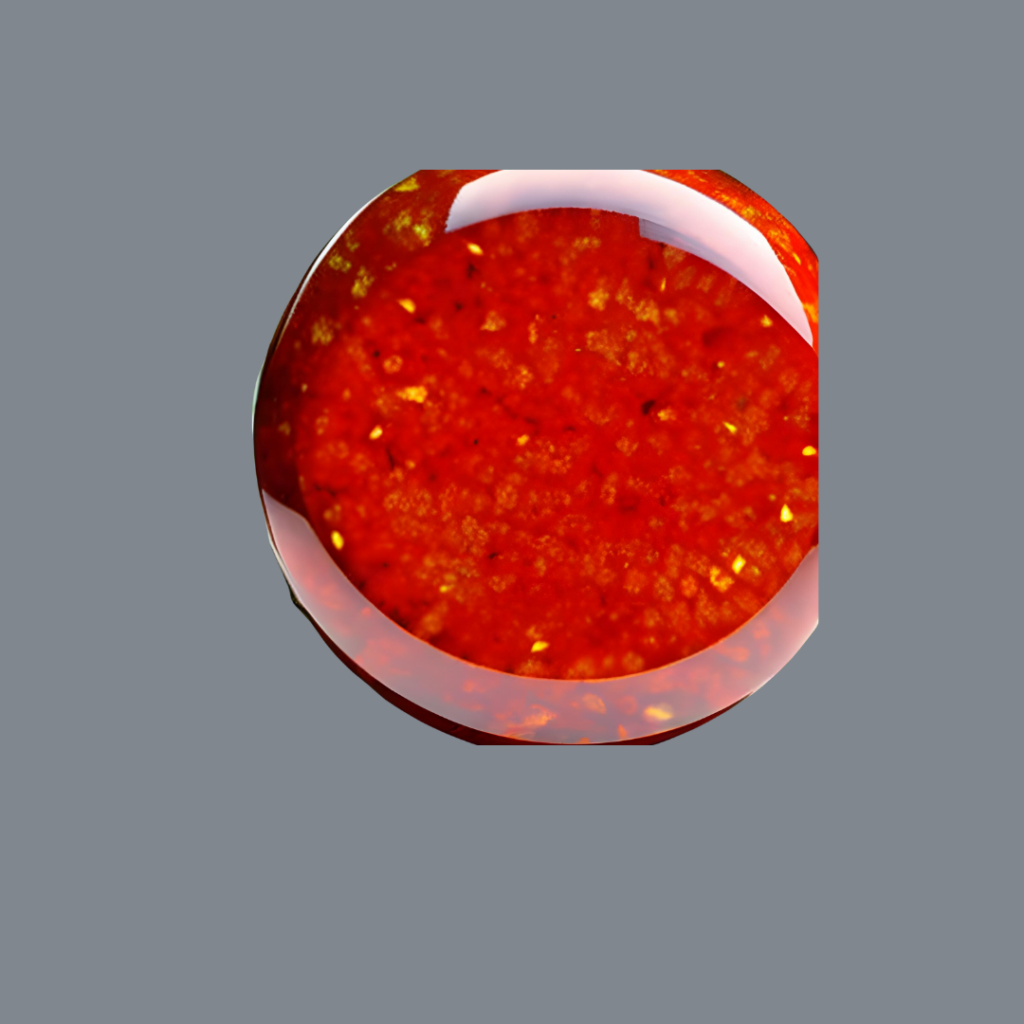
Crocoite Gemstone Value and Price
Several factors, including carat weight, color, cut, and clarity, can influence the value of a Crocoite gemstone. Here is the detail:
- Carat Weight: Like many gemstones, the carat weight of Crocoite can impact its value. Generally, larger Crocoite specimens are rarer and more valuable than smaller ones.
- Color: The color of Crocoite is a primary factor in assessing its value. Vibrant and intense red specimens are highly desirable and typically command higher prices.
- Cut and Shape: The cut and shape of Crocoite gemstones can impact their value. The gemstone is often cut into elongated prismatic shapes to showcase its unique crystal formations.
- Clarity: Crocoite crystals can vary in clarity, with some specimens being more transparent and others more opaque. Generally, higher transparency can be desirable.
- Origin and Rarity: The origin of a Crocoite gemstone can also influence its value. Specimens sourced from the Adelaide Mine in Tasmania, Australia, which is the primary locality for Crocoite, often carry a higher value due to their rarity and unique geological conditions.
How Can You Tell If A Crocoite Gemstone Is Real?
If you want to check if a Crocoite gemstone is real, you can do some tests and observations:
- Color: Genuine Crocoite gemstones exhibit a distinct vivid red color, ranging from fiery orange-red to deep crimson.
- Crystal Form: Crocoite crystals typically have long, slender prismatic shapes. Look for elongated crystal formations and striations along the length of the crystal.
- Hardness: Crocoite has a hardness of 2.5 to 3 on the Mohs scale. You can perform a scratch test by using a material of known hardness, such as a fingernail (2.5) or a copper penny (3), and gently scratching the gemstone’s surface.
- UV Fluorescence: Crocoite gemstones from the Adelaide Mine often exhibit strong orange fluorescence under ultraviolet (UV) light. However, remember that this test alone is inconclusive and should be used with other assessments.
It’s important to note that these tests can provide initial indications. Still, to definitively determine authenticity, it is best to consult a qualified gemologist.
What Does Crocoite Gemstone Symbolize?
Crocoite gemstone is associated with several symbolic meanings and metaphysical properties. Here are some commonly attributed symbolic meanings of Crocoite:
- Passion and Energy: Crocoite is believed to symbolize passion, vitality, and fiery energy. It is said to ignite a spark within the wearer, encouraging enthusiasm, motivation, and the pursuit of one’s passions.
- Creativity and Inspiration: Crocoite is often seen as a gemstone that stimulates creativity and enhances inspiration.
- Transformation and Personal Power: Crocoite is associated with personal transformation and empowerment. Many people believe that it can help overcome obstacles and break free from limiting beliefs. It is said to empower individuals to step into their own power.
- Sacral Chakra Activation: In the realm of chakra energy, Crocoite is connected to the sacral chakra, which is associated with creativity, passion, and emotional expression.
It’s important to note that these symbolic meanings are based on metaphysical beliefs and personal interpretations.
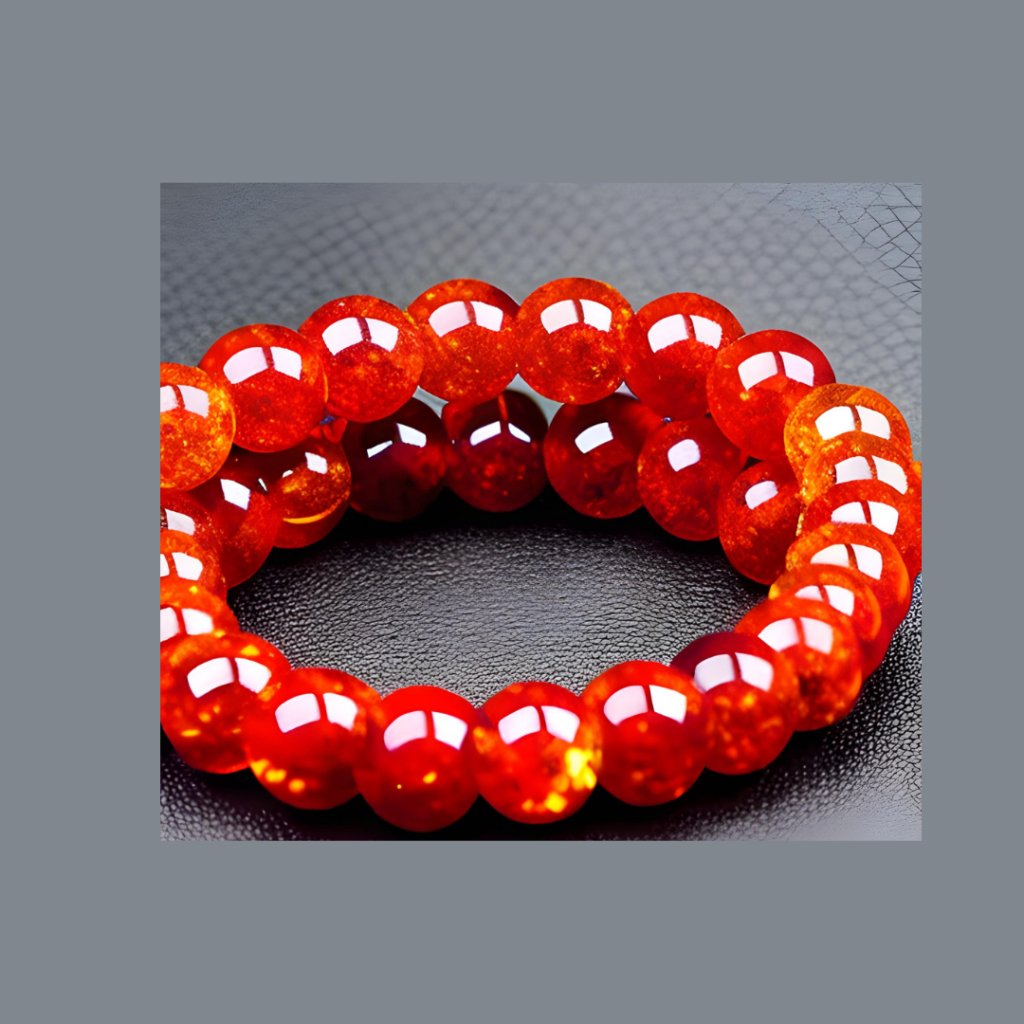
Uses of Crocoite Gemstone
With its unique characteristics and vibrant red color, Crocoite gemstone has various uses and applications. Here are some common uses of Crocoite:
- Jewelry: One of the primary uses of Crocoite is in jewelry design. The gemstone’s rich red color and distinctive crystal formations make it an attractive choice for pendants, earrings, rings, and other forms of jewelry.
- Collection and Display: Due to its rarity and visual appeal, Crocoite is highly sought after by gemstone collectors and enthusiasts. It is often acquired and displayed as part of mineral and gemstone collections for its aesthetic beauty and geological significance.
- Healing and Metaphysical Practices: Crocoite gemstone is believed to possess metaphysical properties that can be utilized in various healing and energy work practices. It is thought to promote vitality, passion, and creative expression.
- Decorative Objects: Crocoite crystals, especially larger specimens, can be used as decorative objects in home or office settings.
- Educational and Scientific Purposes: with its geological significance, Crocoite is valuable for educational and scientific purposes. It contributes to understanding mineral formations and the geological processes involved in their formation.
Which Gemstones Go Best With Crocoite Gemstone?
Crocoite gemstones are bright orange-red, so pairing them with gemstones that complement or contrast their color is best. One option is to pair Crocoite with green gemstones to create a striking contrast. Some green gemstones that would work well include emerald, peridot and green tourmaline.
Another option is to pair Crocoite with other warm-toned gemstones, such as citrine or carnelian, to create a harmonious color scheme. Ultimately, the choice of gemstones will depend on personal preferences and the desired aesthetic effect.

Beautiful Jewelry of Crocoite Gemstone
How To Take Care Of Crocoite Gemstone Jewelry?
Properly caring for your Crocoite gemstone jewelry is essential to preserve its beauty and longevity. Here are some tips to help you maintain and care for your Crocoite gemstone jewelry:
- Avoid Chemicals: Crocoite can be sensitive to chemicals, including harsh cleaning agents, detergents, and cosmetics. Remove your jewelry before engaging in contact with chemicals, such as cleaning, swimming, or applying beauty products.
- Gentle Cleaning: To clean your Crocoite gemstone jewelry, use a soft, lint-free cloth, non-abrasive cleaning solution specifically formulated for gemstones. Gently wipe the gemstone’s surface to remove dirt, oil, or residue.
- Storage: When not wearing Crocoite jewelry, store it in a clean, dry place and at extreme temperatures.
- Avoid Impact and Scratches: Crocoite has a relatively low hardness on the Mohs scale, so protecting it from scratches and impact is important. Avoid wearing Crocoite jewelry during physical activities or when it may come into contact with rough surfaces.
- Periodic Inspection: Regularly inspect your Crocoite jewelry for any signs of damage, loose settings, or wear.
- Professional Maintenance: It is advisable to have your Crocoite jewelry professionally cleaned and inspected by a jeweler periodically.
By following these care tips and carefully handling your Crocoite gemstone jewelry, you can help preserve its beauty and extend its lifespan.
Frequently Asked Questions (FAQs)
Is Crocoite a rare gemstone?
Crocoite is considered a rare gemstone. It is primarily found in limited quantities at the Adelaide Mine in Tasmania, Australia.
Can Crocoite gemstones be used for everyday jewelry?
Crocoite is a relatively soft gemstone with a hardness of 2.5 to 3 on the Mohs scale. Due to its delicate nature, it is not recommended for everyday wear as it may be susceptible to scratches and damage.
Does Crocoite have any historical or cultural significance?
Crocoite has historical significance, particularly in Tasmania, where it is the official mineral emblem. It is highly valued by mineral collectors and enthusiasts for its rarity and aesthetic appeal.
Can Crocoite gemstones be used for metaphysical purposes?
Crocoite is believed to possess metaphysical properties associated with passion, creativity, and personal empowerment. It is often used in metaphysical practices such as meditation, energy work, and chakra balancing.
Can Crocoite be used in engagement rings or wedding bands?
Due to its relatively low hardness and delicate nature, Crocoite is not recommended for use in engagement rings or wedding bands subjected to daily wear and potential impact.





